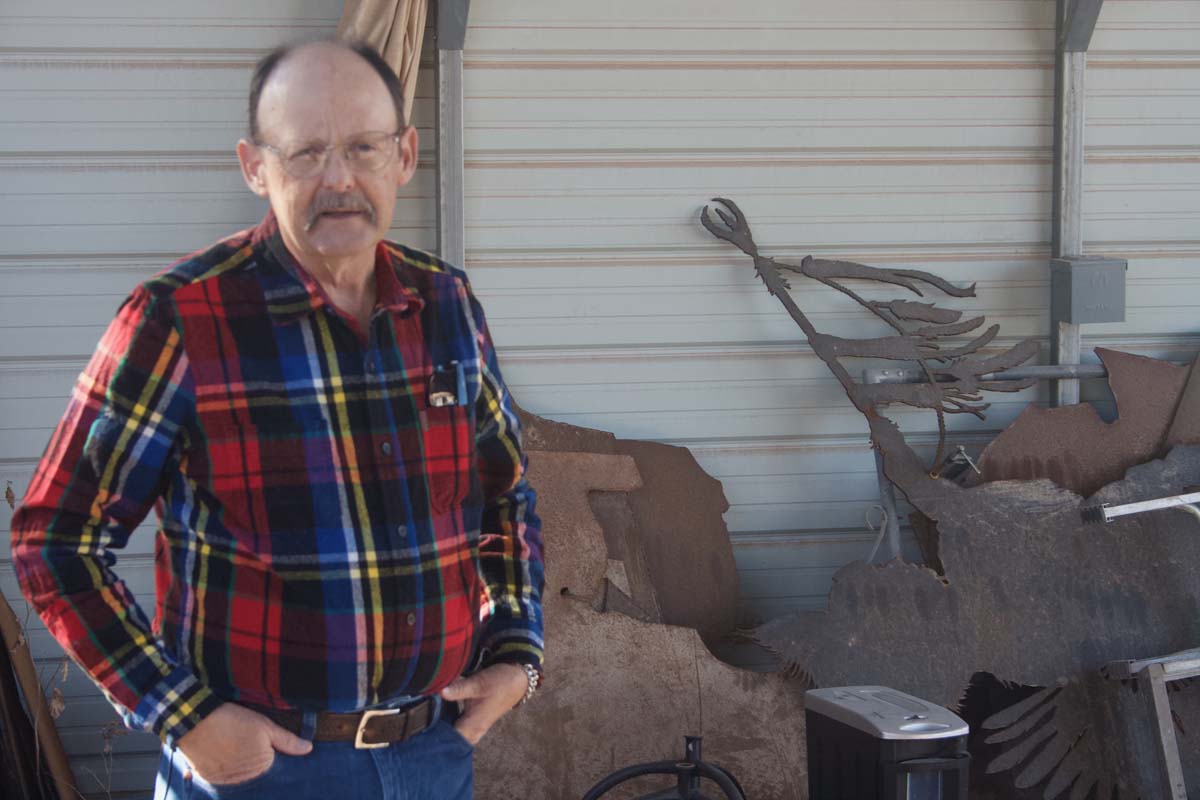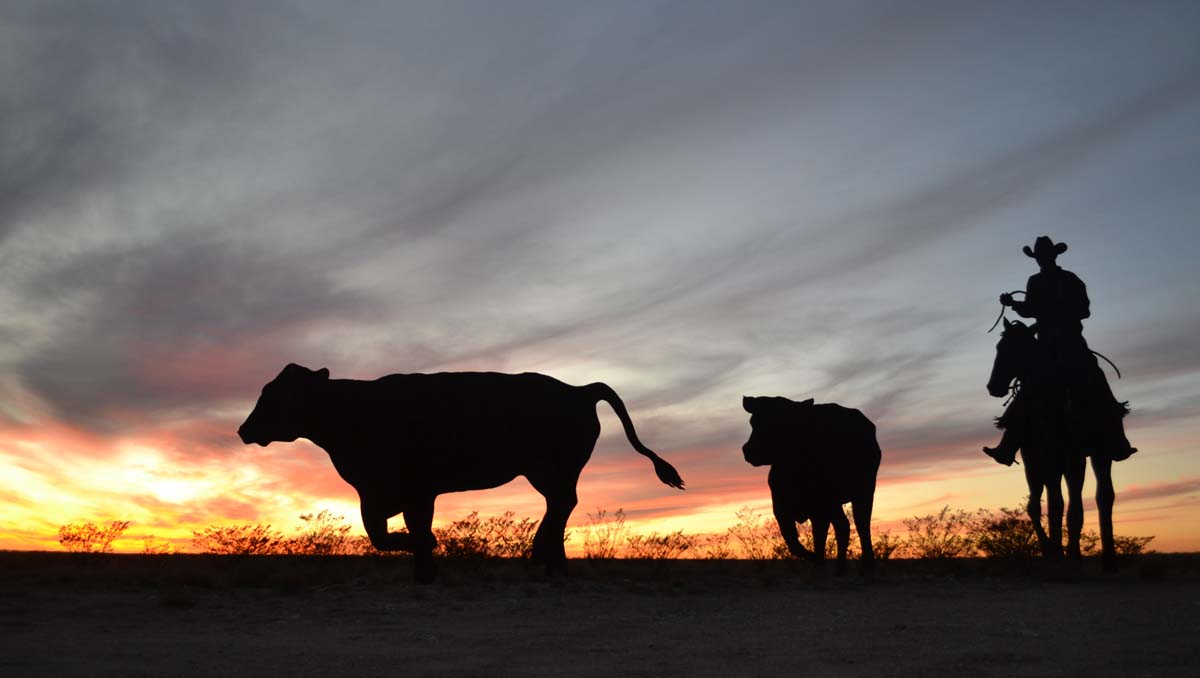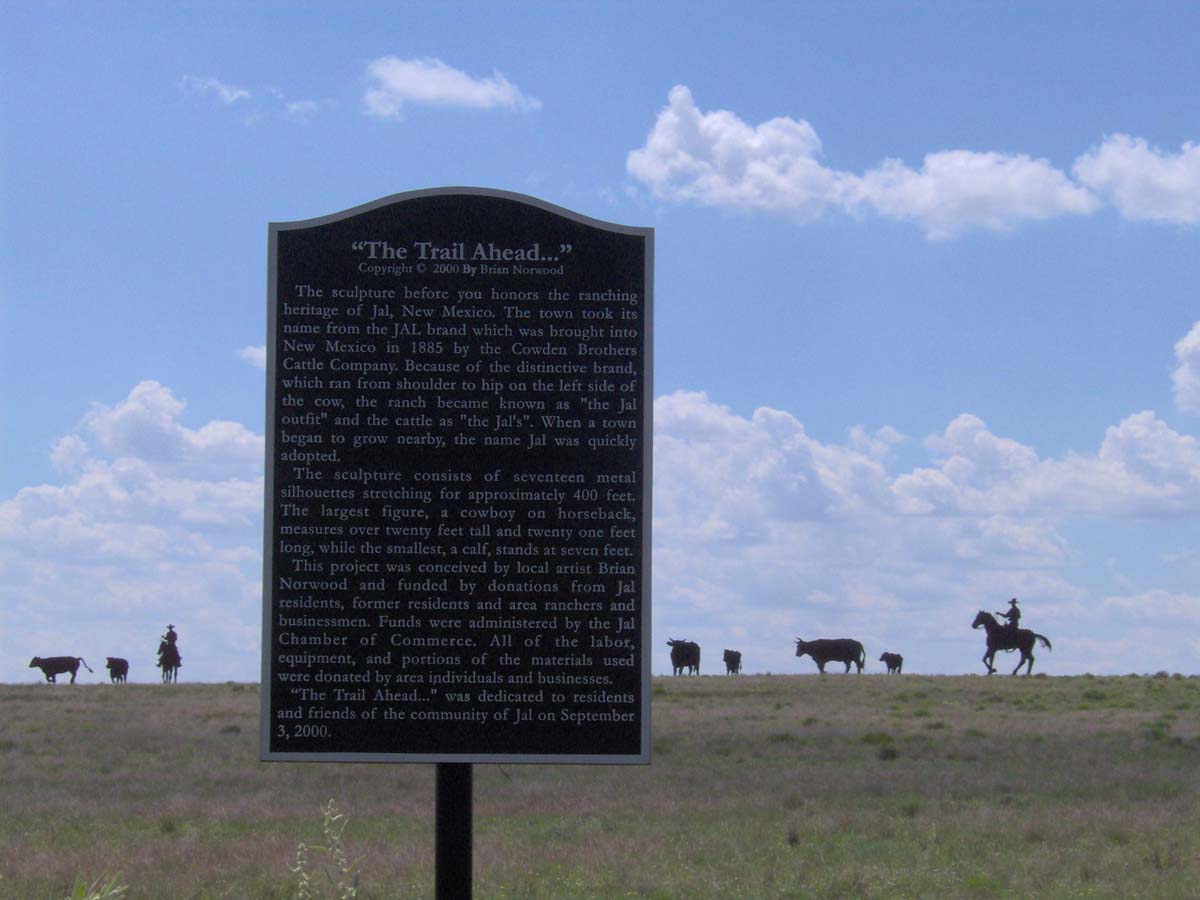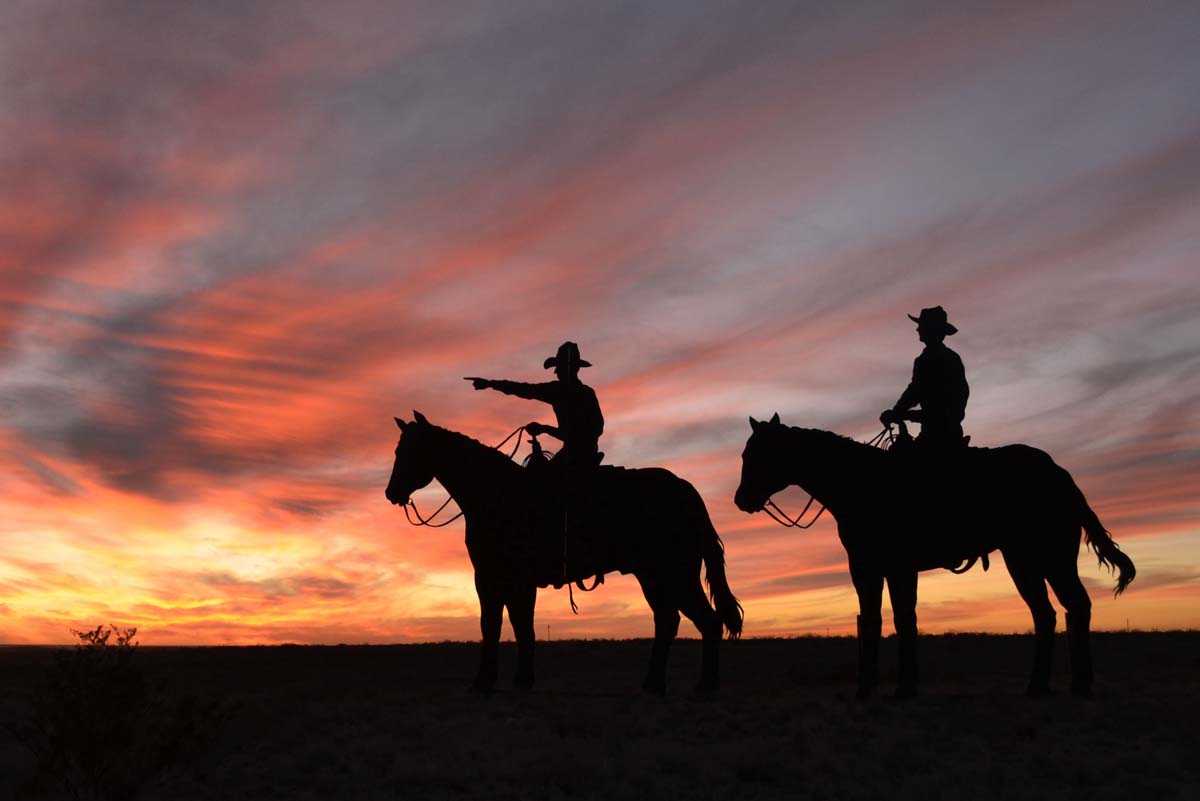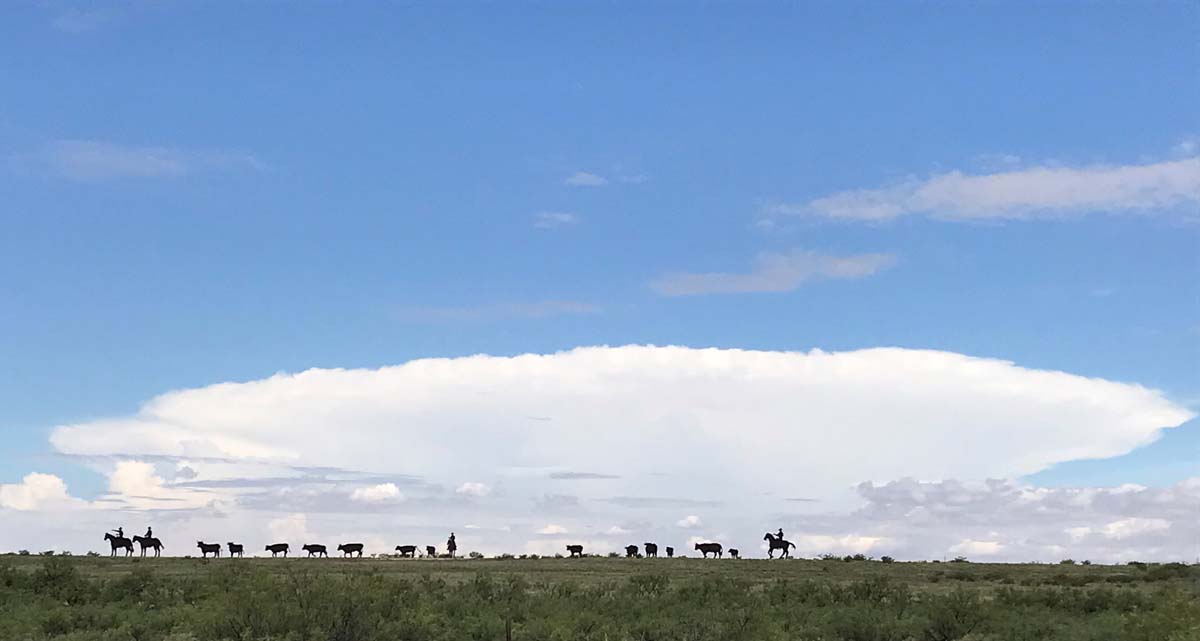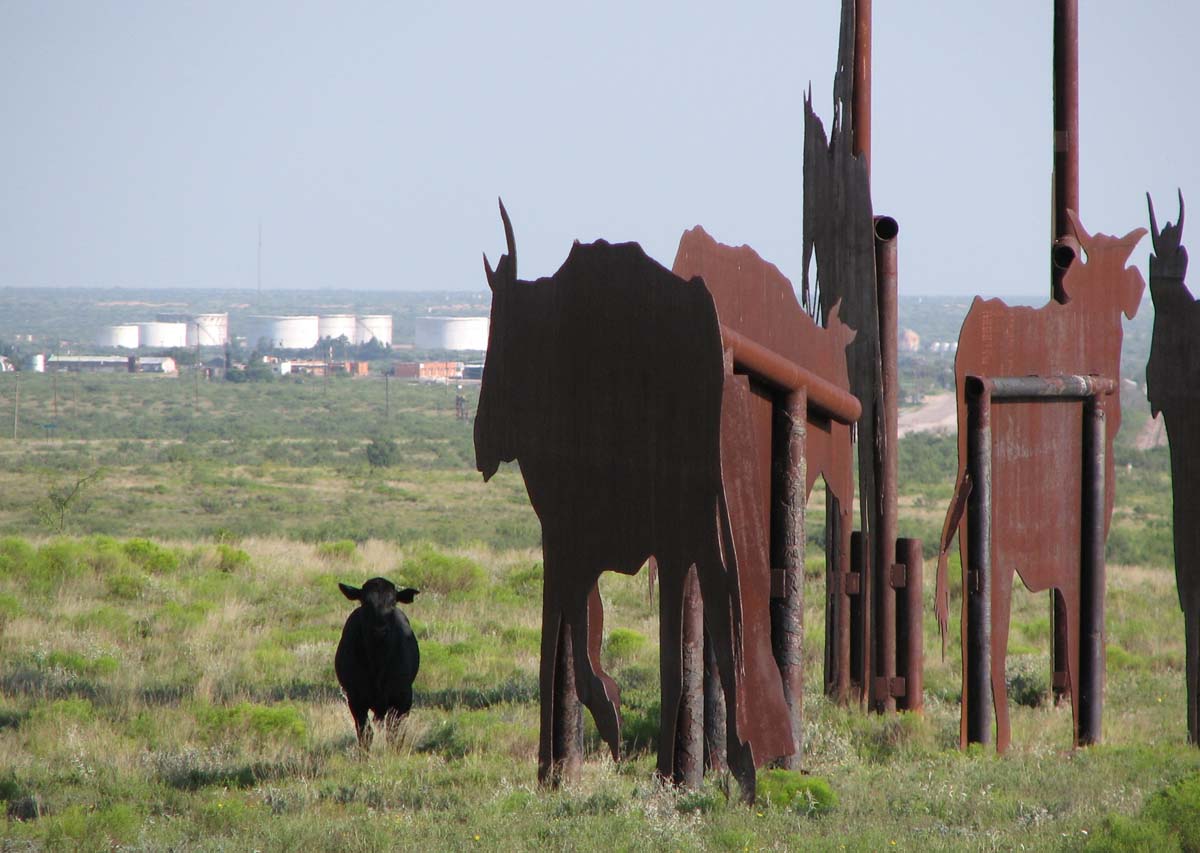Brian Norwood’s sculpture The Trail Ahead…, erected in 2000, has created an identity for the small oil-and-gas town of Jal, New Mexico, much as the town created him.
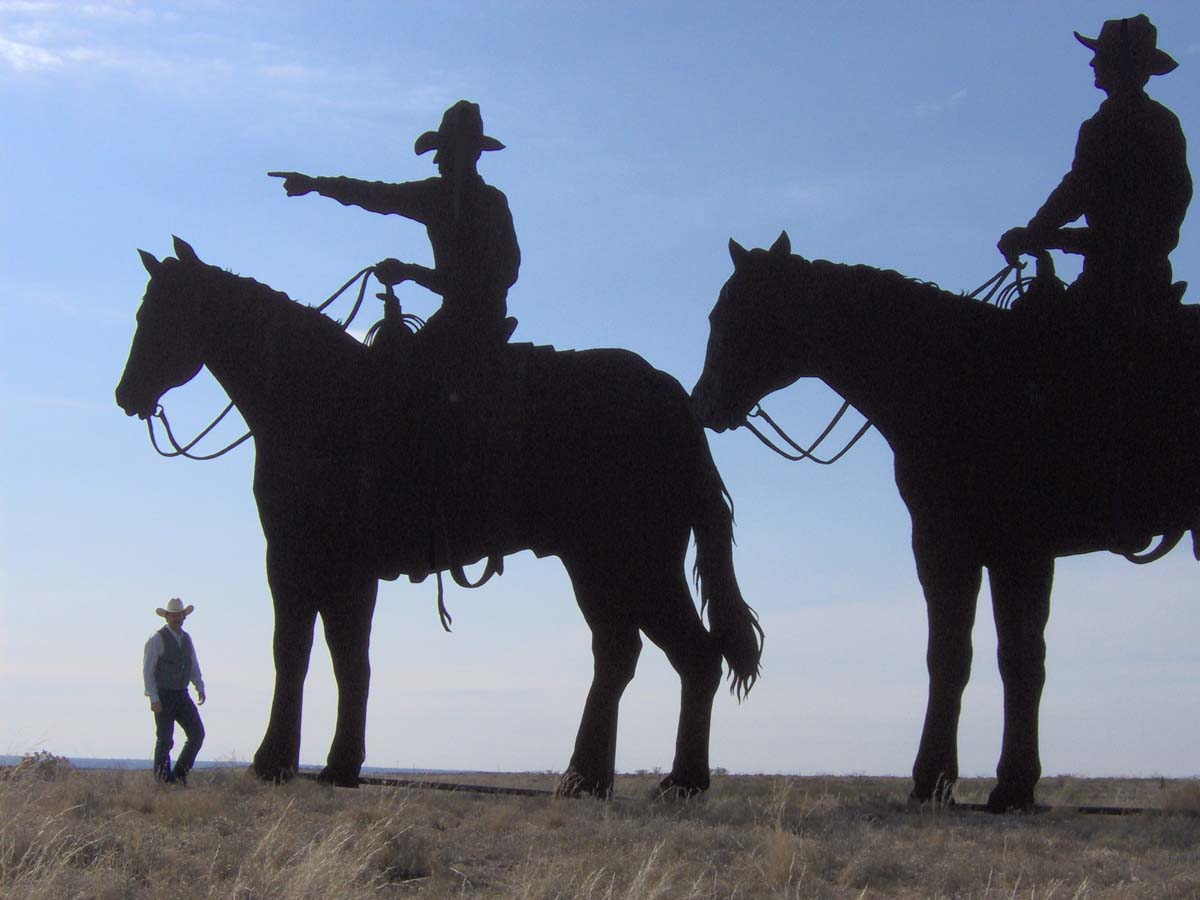
This article is part of our Living Histories series, a continuation of the ideas explored in Southwest Contemporary Vol. 9.
Parallel to Highway 18 as it runs into Jal, New Mexico, there’s a silhouette of a cattle drive. Four ranchers, four horses, and thirteen head of cattle. The cattle and ranchers each seem to move at their own pace as you drive past, the kind of image you’d see in an old Western, a setting sun behind the drive turning the figures into shadows, unrelenting in their long, arduous trek to camp. This is The Trail Ahead…, by Brian Norwood, erected in 2000.
“I was one of those kids that said, ‘when I graduate, I’m leaving Jal, I’m never coming back.’” Norwood says. “So here I am, all these years later. Jal is home.”
Brian Norwood’s studio is in his carport, behind the house he shares with his wife, Karen, in the old El Paso Natural Gas Camp. Jal was an oil and gas boomtown, and when EPNG pulled out in 1985, the company took the money with them. The camp’s still there, though, and besides the time Norwood spent in college, he’s lived in that same house since he was in high school.
When I pull up, the Norwoods greet me at their front door. Karen gives me a big hug. We sit in their living room, which is lined with photos of family and friends. Throughout the interview, Brian and Karen take turns disappearing into the back room to pull out photographs and paintings of Norwood’s work through the years. Though he’s been prolific, in Jal, Norwood is probably best known for The Trail Ahead… Maybe it’s more accurate to say that Jal is probably best known for The Trail Ahead… The line is blurry.
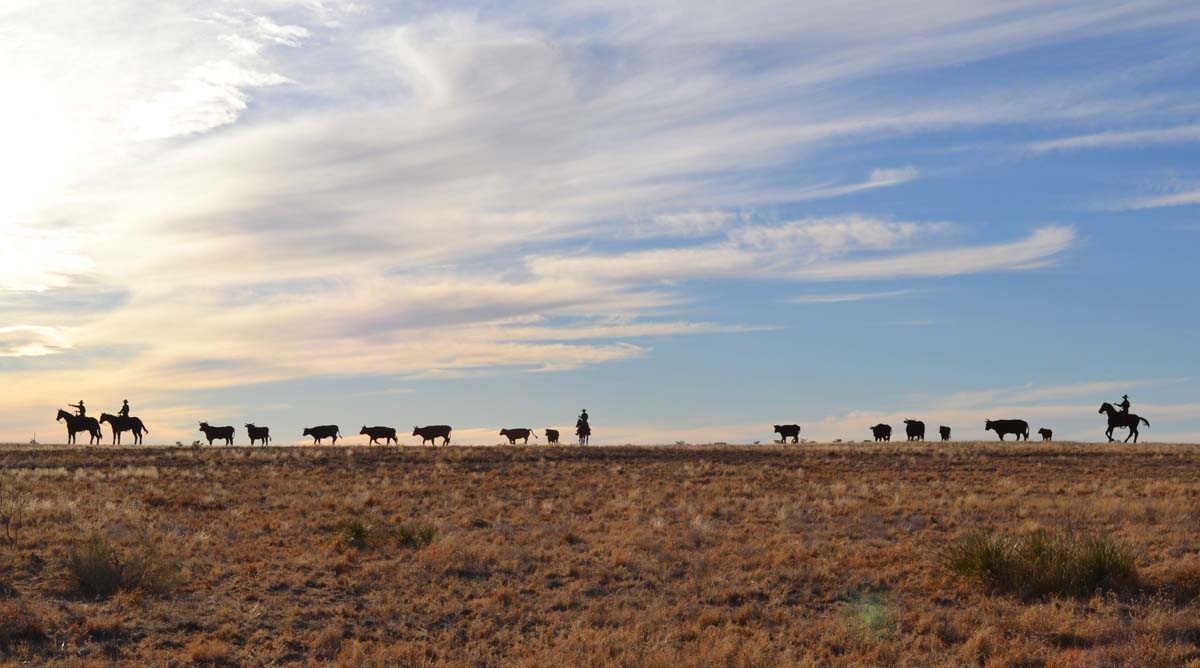
Spend any time in Jal, and you’ll see why the town claims Norwood as their local artist. His signature spans not just the town, but its history as well, with sculptures, murals, and statues depicting Jal in its long, storied past. Golfer Kathy Whitworth, spacecraft engineer Charles D. Brown, and even country music legend Roy Orbison all have ties to Jal—through his work, Norwood aims not only to capture this history, but to highlight it for future generations, creating an identity of Jal they can be proud of.
Thirteen years after EPNG pulled out, Jal was experiencing immense economic downturn, and needed something to attract tourists. Around this time, in Southern Living, Norwood read an article about Cha’ Tullis’s (Northern Blackfoot, Cherokee descent) sculpture The New Territory (1997), which was credited with bringing in over 150,000 visitors to Hominy, Oklahoma the year after it was erected. Norwood’s idea was simple: create a work intrinsically Jal that could draw visitors from across the country as Tullis’s sculpture did for Hominy. He decided on a massive silhouette of a cattle drive two miles north of town. In 1999, he brought his idea to the Jal Chamber of Commerce, and by the end of the meeting, he’d received a $1000 pledge from a local rancher; now, there was no backing out.
“I began to realize how popular the idea was and how much of a thing to bring the community together it was. I really hadn’t been prepared for that,” Norwood says. “It was humbling to think people were that excited about it.” His voice quiets when he says this—twenty years have passed, but he still seems stunned at the belief the community showed in his mission.
And believe they did. Emails were sent to high school alumni; a garage sale was held at the nursing home; people even approached Norwood on the street to hand him cash from their pockets. One rancher pledged to match up to $5000 if Norwood could make one of the silhouettes match that of his old wagon boss, Henry Scott. That one is the second from the left.
“There are people who have had experiences in Jal certainly all over the country, if not the world,” Norwood says. “Because of that, we had a lot of support with the silhouettes that I don’t think another community might have given…I don’t think the silhouette project could have been done in many other places the way it was done. Because it was very much a community project.”
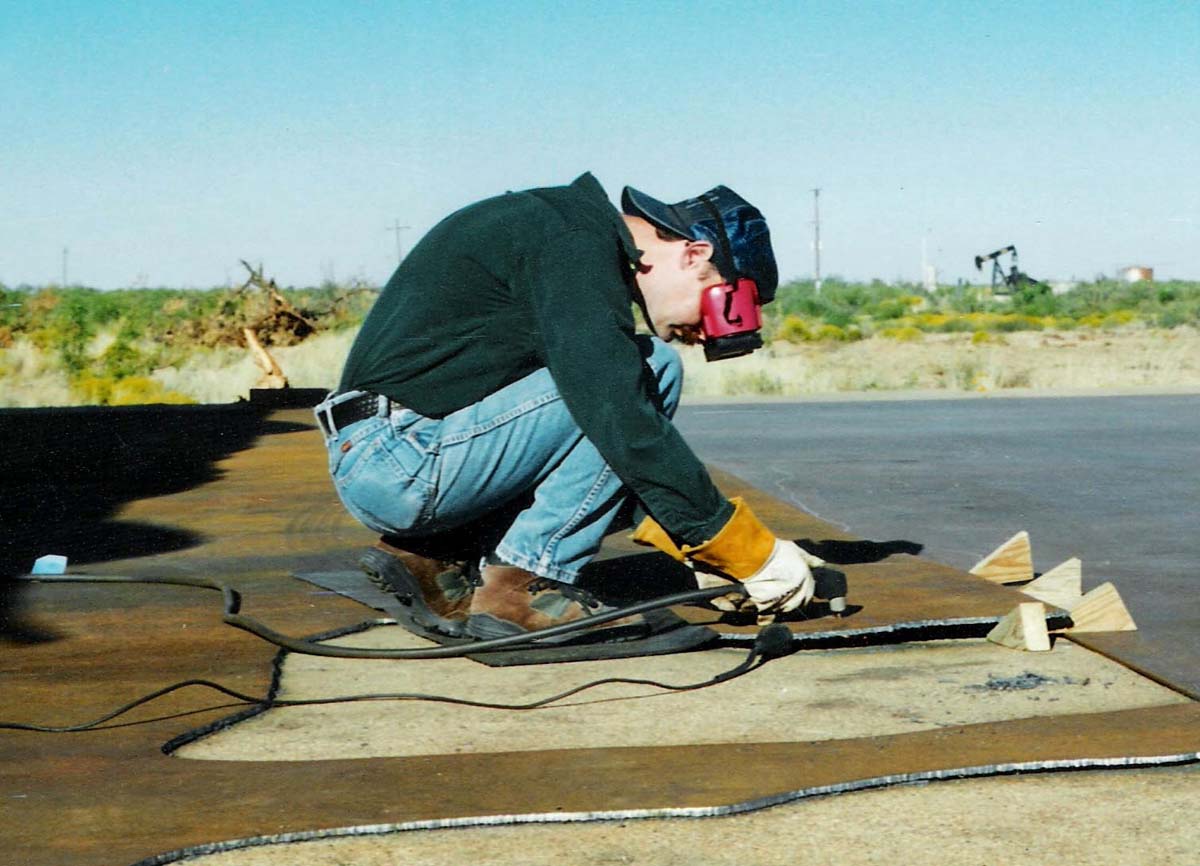
With help from local welder Gene Armstrong, the sculpture went up on March 17, 2000. While assembling it, Norwood recalls hearing brakes squeal on the highway as passersby slowed down to catch a glimpse of what was going up. Now, the project is said to have attracted visitors to Jal from countries around the world.
Asked about the how he feels being a part of the Jal history he now celebrates, Norwood hesitates. “I don’t feel old. But when you consider that you’ve become part of the history of a place, it’s kind of a shock. Kind of mind-numbing.”
“We forget we’re the old ones now,” Karen adds.
Though Norwood’s work has shown in galleries, including in a 2004 exhibition centering on The Trail Ahead…, the main impact of his work in Jal has been local. Though work on The Trail Ahead… only began in 1999, the piece has already become a central image for the town—now, when people think about Jal, they think about the horses, the cattle, the cowboys.
“When we were growing up,” Karen says, “we were taught New Mexico history. But it was Santa Fe, and it was the conquistadores. We were never taught where Jal got its name—we knew about El Paso, maybe, but we were never taught Jal history. Brian has made people more aware of this history.”
Jal is in far less dire straits than it was twenty years ago, but Norwood rejects claims that his sculpture at all saved Jal during those uncertain post-EPNG years; still, his work supports the community by highlighting their history, giving them something to be proud of, a town symbol spanning 400 feet of New Mexico plain. With his work, Norwood doesn’t just convey Jal, but creates it; now, his work has become as essential to Jal as Jal is to him.
